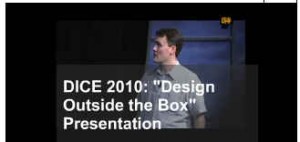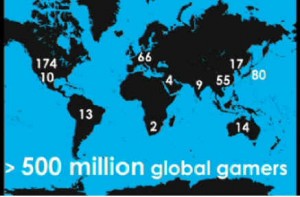Sometimes things cluster. They appear close enough together that patterns emerge. Today I would like to introduce a cluster of items that I’ve recently come across courtesy of Yahoo movies, TED, and the BBC.
Let’s start with Yahoo movies, where I regularly go to watch the previews for upcoming movies that I will mostly never see. I feel each chew of my lunch with my headset on as I run through tw0-minute introductions to horror flicks, kid movies, chick flicks, made-to-be blockbusters, and occasionally very interesting movies whose titles I hopefully will recognize in a year or so when they show up for rental here in Japan. Among the few previews I watched a few weeks back was Moneyball, more because it was there than because it stars Brad Pitt, is about baseball, or is the story of Billy Beane–a list with two didn’t-really-cares and one didn’t-know. But to my surprise, the topic and the movie grabbed my interest. Because of this: Sabermetrics. Sabermetrics is the use of empirical statistical evidence to evaluate past success and predict future success. In my understanding of baseball, it is a game of statistics, and so a movie based on a book based on a team that uses a new statistical approach to get phenomenal results with fractional investments made me interested in the topic of how someone could effectively use more stats, different stats, in a world driven by stats, and make a big difference. It is a merging of cultural self-awareness and math that allows for the seeing of things that are there but had not been noticed, because people lived with a different culture and because they didn’t do/ read the math. The stats people watched had been based on old thinking about the game, knowledge and norms amassed over generations–prevalent and flawed, or at least incomplete.
And then yesterday a BBC article steered me toward a TED talk. Skim the article but watch every moment of the presentation. I promise you won’t be disappointed. Kevin Slavin begins to explain the physics of culture. The talk is mostly about Wall Street and the algorithms they use to play the market and the infrastructure being built to give those algorithms a few milliseconds headstart to do their job, but his comments about culture and algorithms brought me back to Moneyball and how things people think of as esoteric (and by esoteric I mean knowable only by a select group that does not include many people and all machines) are knowable, convertible into algorithms, and effective on you. Did you know that 70 % of choices made on Netflix are the result of suggestions made by an algorithm, one called Pragmatic Chaos? Or that algorithms are helping to decide what movies get made at all?
This is a challenge to culture and I do not mean big “C” culture, but rather the way we view what culture is, who creates it, and what it means for all of us. The BBC article sounds practically ominous:
…our electronic overlords are already taking control, and they are doing it in a far more subtle way than science fiction would have us believe. Their weapon of choice – the algorithm. Behind every smart web service is some even smarter web code. From the web retailers – calculating what books and films we might be interested in, to Facebook’s friend finding and image tagging services, to the search engines that guide us around the net. It is these invisible computations that increasingly control how we interact with our electronic world.
In typical hyperbolic fashion this confuses the point with the fear. It is not only about our electronic worlds, and if we have overlords it is by virtue of not understanding ourselves and our own culture(s) very well, not because some new type of insidious new electronic overlords have recently been put in place.
 On June 9th I was lucky enough to be able to go down to Miyazaki for the 42nd Kyushu-Okinawa Chapter LET Conference held at Miyazaki Municipal University. I had a great time there at the small but interesting conference, meeting up with some old friends and colleagues, and meeting some interesting people.
On June 9th I was lucky enough to be able to go down to Miyazaki for the 42nd Kyushu-Okinawa Chapter LET Conference held at Miyazaki Municipal University. I had a great time there at the small but interesting conference, meeting up with some old friends and colleagues, and meeting some interesting people. My presentation was titled Crossing Cultures and Aiding Learning: 105 Years of Treasure Hunting. The whole presentation was recorded for Ustream and is available here. The (abridged) slides are available here. And links for all the tools and websites mentioned in the presentation can be found here.
My presentation was titled Crossing Cultures and Aiding Learning: 105 Years of Treasure Hunting. The whole presentation was recorded for Ustream and is available here. The (abridged) slides are available here. And links for all the tools and websites mentioned in the presentation can be found here.



